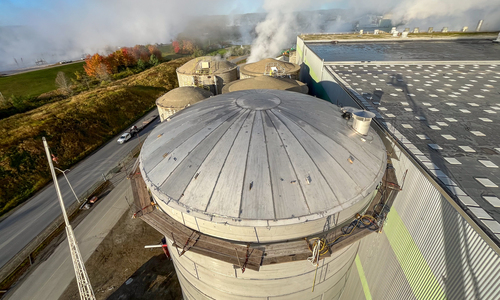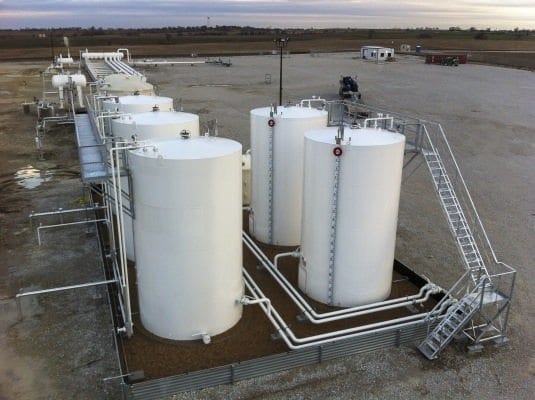All About Welding Examination: Key Conveniences for Your Jobs
Welding assessment plays a vital function in the building and construction and production sectors. It guarantees that welded joints satisfy high quality and safety and security requirements. By determining defects early, tasks can prevent financial losses and considerable hold-ups. Adhering to industry guidelines not just secures the honesty of the end product but additionally constructs trust among stakeholders. Understanding the nuances of this process reveals extra benefits that can affect job outcomes significantly. What are these benefits?
Understanding the Welding Assessment Refine
Welding is an important part in numerous markets, the examination process is necessary to guarantee top quality and safety. This procedure involves a series of organized examinations designed to identify any type of prospective problems that might jeopardize the honesty of welded joints. Initially, examiners assess welding treatments and certifications to verify conformity with industry requirements.
Following this, visual evaluations are performed to analyze the total look and finish of welds. Non-destructive testing methods, such as radiographic or ultrasonic screening, may additionally be utilized to discover inner imperfections without harming the material. Documents plays a vital duty, as it provides a document of examinations and findings, verifying traceability and liability.
Ultimately, recognizing the welding inspection procedure cultivates self-confidence in the quality of the ended up item, lowers the threat of failings, and improves overall task success in numerous applications, from building and construction to manufacturing. API 650 Welding Inspection.
Typical Kinds Of Welding Flaws
Welding defects can significantly influence the stability and performance of welded structures, as they might bring about failings under stress and anxiety or adverse problems. Usual sorts of welding problems consist of splits, porosity, insufficient combination, and slag incorporation. Fractures can develop as a result of thermal tensions or improper air conditioning, endangering the joint's stamina. Porosity describes the presence of gas bubbles caught in the weld, which can damage the joint and reduce ductility. Incomplete fusion happens when the weld metal does not effectively bond with the base material, causing weak points. Slag incorporation happens when non-metallic contaminations become entraped within the weld, leading to a decrease in structural honesty. Identifying these flaws early via assessment is essential for keeping quality and guaranteeing safety and security in bonded structures. Recognizing these usual flaws allows for enhanced welding methods and enhanced task outcomes.
Relevance of Conformity With Market Standards
Compliance with industry criteria is important for keeping structural integrity in welding tasks. Following these criteria not just minimizes obligation risks yet also enhances the overall top quality of the finished work. This positioning cultivates count on amongst stakeholders and warranties that forecasts fulfill both safety and security and performance expectations.
Making Certain Structural Stability
Assuring architectural integrity is extremely important in any building and construction or production job, as adherence to industry requirements serves as a foundation for security and integrity. Conformity with these criteria warranties that welding processes meet rigorous specs, which is vital for the resilience of structures. Routine welding examinations verify that strategies and products straighten with established guidelines, stopping possible failings that can jeopardize integrity. Furthermore, adhering to sector requirements advertises uniformity in high quality, which is crucial for preserving public rely on building and construction techniques. By focusing on structural stability through diligent adherence to standards, companies can improve the overall performance of their jobs, causing much safer environments and prolonged possession lifespans. Inevitably, this commitment reflects a positive strategy to quality assurance in welding techniques.
Lowering Obligation Risks
Sticking to sector standards considerably minimizes responsibility risks connected with welding tasks. Compliance with established guidelines warranties that welds fulfill security and efficiency requirements, lowering the chance of failures that could lead to crashes or lawsuits. This aggressive technique not only secures the labor force however additionally safeguards the financial passions of the business. Insufficient assessments or subpar methods can result in pricey repair services, lawful disagreements, and damage to online reputation. By implementing extensive welding assessments, business demonstrate their dedication to high quality and security, eventually minimizing direct exposure to possible cases. On top of that, adherence to policies enhances depend on amongst stakeholders and clients, as it suggests a dedication to keeping high criteria throughout you can try these out the project lifecycle. Reducing obligation threats is vital for long-lasting company sustainability.
Enhancing Task Quality
Rigorous welding examinations not only reduce obligation threats however likewise play a critical duty in enhancing overall task top quality. By adhering to market requirements, these evaluations ensure that welds meet defined criteria for safety, toughness, and toughness. Compliance with developed standards assists determine defects early, minimizing the possibility of expensive rework or job delays. Moreover, regular quality assurance cultivates count on amongst stakeholders, including customers and governing bodies, which can bring about repeat business and positive referrals. Inevitably, a dedication to top notch welding methods not only improves the honesty of the last product yet additionally upholds the reputation of the company included. Comprehensive examinations offer as a keystone for effective and sustainable job end results.
Effective Benefits of Early Detection of Problems
Early detection of welding problems offers substantial benefits, particularly pertaining to price financial savings on repair services. By identifying problems prior to they intensify, companies can enhance the structural stability of their jobs. This aggressive method not just lessens financial expenses yet likewise advertises safety and dependability in welded frameworks.
Cost Financial Savings on Repairs
Identifying welding issues quickly can result in considerable cost savings on fixings. Early recognition of problems enables targeted interventions, lessening the extent of damage and avoiding costly, considerable fixings later on. When issues are attended to during the preliminary stages of a task, resources are utilized more effectively, lowering both labor and material costs. Additionally, prompt assessments can protect against project delays, which commonly sustain added costs. By remedying problems early, business can prevent the financial worry related to rework, guarantee cases, and prospective security risks. Eventually, buying positive welding examinations cultivates a much more economical strategy to job monitoring, making certain that budget plans stay intact while keeping the top quality and integrity of the end product.
Boosted Architectural Stability
Guaranteeing the structural integrity of bonded parts rests on the timely recognition of possible problems. Early discovery during the welding assessment process enables the immediate correction of flaws such as splits, voids, or incorrect fusion. Dealing with these issues immediately not only boosts the stamina and toughness of the weld yet likewise reduces the threat of disastrous failures throughout the service life of the framework. Routine evaluations add to a more reliable evaluation of weld top quality, making certain compliance with sector requirements. By focusing on welding assessments, task supervisors can preserve a greater level of safety and security and efficiency, eventually causing successful project results. Improved structural integrity mirrors the commitment to quality and adherence to best practices in welding.
Cost-Effectiveness of Welding Inspections
While several firms might check out welding inspections as an extra expenditure, they commonly prove to be an economical financial investment in the future. By determining issues early, these assessments can stop expensive repair services or substitutes that may develop from undiscovered issues. This positive strategy not just conserves money however likewise lessens project hold-ups, guaranteeing that timelines are followed.

In addition, premium welding assessments contribute to improved performance, bring about less rework circumstances and enhanced performance. The decrease in material waste and labor prices connected with redesigning faulty welds contributes to the financial advantages.
Buying thorough assessments additionally enhances the overall top quality of the final product, which can lead to increased client fulfillment and repeat company. Inevitably, the preliminary costs related to welding evaluations are usually surpassed by the long-lasting financial savings and advantages they give, making them a smart selection for any kind of welding task.
Enhancing Safety and Dependability in Welding Projects

Welding inspections play a necessary role in enhancing safety and dependability within welding jobs, as they systematically determine possible hazards and weak points in welds. By employing qualified inspectors, companies can assure that welding processes follow industry read here standards and regulative needs. This proactive method lessens the danger of weld failures, which can cause mishaps, pricey repair services, and task hold-ups.
In addition, evaluations give essential paperwork that shows conformity and quality control, promoting count on between stakeholders. Normal assessments during different job stages enable the timely discovery of issues, enabling corrective activities prior to they escalate. In addition, the insights obtained from evaluations contribute to constant improvement in welding practices, enhancing overall project results. Eventually, robust welding evaluation protocols not only secure employees yet likewise safeguard financial investments, assuring imp source that jobs are finished efficiently and fulfill the greatest safety and security and reliability standards.
Frequently Asked Concerns
What Credentials Should a Welding Assessor Have?
A welding inspector must have appropriate qualifications, such as Licensed Welding Inspector (CWI), in addition to considerable understanding of welding codes, processes, and materials. API 650 Welding Inspection. Experience in the area and strong logical skills are likewise important for effective evaluations
How Typically Should Welding Inspections Be Carried Out?
Welding inspections ought to be carried out regularly, usually in the past, during, and after the welding process. The frequency might depend on task specifications, governing demands, and the intricacy of the welds to guarantee structural honesty and security.
Can Welding Inspections Be Carried Out From Another Location?
Welding evaluations can indeed be performed from another location, making use of advanced technologies such as drones, video cameras, and ultrasonic screening devices - API 650 Welding Inspection. This approach enables efficient tracking while reducing the requirement for physical existence at the website
What Devices Are Made Use Of in Welding Inspections?
Welding inspections utilize different devices, consisting of ultrasonic testers, magnetic fragment testers, visual assessment devices, radiographic tools, and calipers. Each tool serves a details objective to ensure weld honesty, quality, and compliance with market criteria.
Exactly how Do I Pick a Welding Examination Service?

To choose a welding assessment service, one need to evaluate certifications, experience, and qualifications. In addition, examining customer endorsements and asking for thorough solution descriptions can assist ensure the selected service fulfills certain task demands successfully.
By focusing on welding inspections, job managers can preserve a greater degree of safety and security and performance, inevitably leading to successful project outcomes. Welding examinations play an important duty in improving security and dependability within welding jobs, as they systematically identify potential threats and weaknesses in welds. A welding examiner ought to have relevant qualifications, such as Qualified Welding Examiner (CWI), along with extensive understanding of welding processes, materials, and codes. Welding inspections need to be performed regularly, generally previously, throughout, and after the welding process. Welding inspections use numerous devices, including ultrasonic testers, magnetic particle testers, visual assessment tools, radiographic equipment, and calipers.